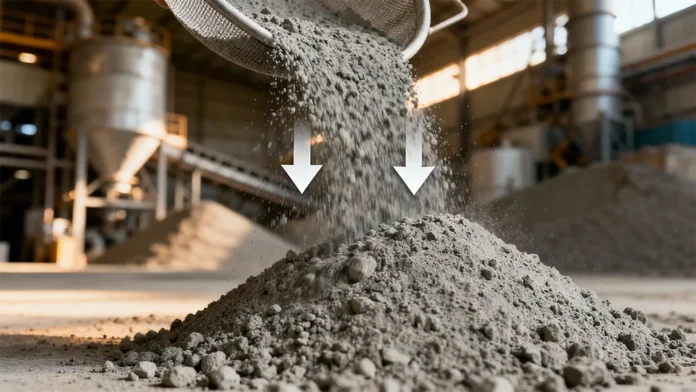It is worth noting that concrete fines have been regarded as waste products but now putting them back into the mix and reducing the embedded carbon has shown signs of working.
The cross-industry trial, which is funded by Innovate UK and led by Materials Processing Institute – MPI happens to form part of the UK Research and Innovation’s – UKRI Contracts for Innovation: Decarbonising Concrete programme.
Starting in September 2024 and culminating in December 2025, the project happens to bring together the industry bodies, engineers, researchers to develop a cement that contains recycled concrete fines – RCF as a lower-carbon option to the Portland cement.
With cement producer Holcim UK as well as the lead partner MPI, participants happen to include the likes of Mott MacDonald, the Minerals Products Association, and also Aston University. In October 2025, the trial ended in a successful demonstration batch of readymix concrete that made use of the RCF-based cement getting poured into molds at the UK readymix concrete plant of Holcim based out of Leicestershire’s Whetstone.
RCF, which happens to be a waste product from demolished buildings, happens to serve so as to replace clinker in Portland cement – PC, which is classified as a CEM I formulation. The demonstration went on to show the feasibility of making use of RCF as a raw material within CEM II cement, replacing almost 20% of clinker. Clinker, by the way, is the most carbon-intensive element when it comes to cement production, since the raw material has to be heated to high temperatures so as to form the material. By decreasing the amount of clinker in the cement-blended products, the total product carbon footprint gets reduced.
Danielle Dawson, Holcim UK technical innovation manager, explains that the recycled concrete fines that are at present treated as a demolition waste stream can get processed in order to partially replace clinker, which is the most carbon-intensive component when it comes to cement manufacturing. The demonstration went on to show that RCF could as well replace almost 20% of clinker in a CEM II cement formulation without even compromising the feasibility of production. Clinker production, by the way, is responsible for the majority of emissions when it comes to cement because of the high-temperature calcination process that is needed to form it.
She further said that the success of this trial goes on to very well mean that they are on the way to having yet another viable replacement to PC on the market soon and all set for future construction projects. The next stage is supposed to undergo further testing as well as certification before this CEM II-classified product can get written within the revised British Standards for concrete, BS 8500.
RCF is at present permitted in cement as per EN 197-6; however, it is not yet harmonized with BS 8500 when it comes to ready-mix applications. Apparently, the next revision of BS 8500 happens to be due in 2027.
While the testing is ongoing, Holcim UK is also speeding up its plans so as to scale this innovation. Plans are in place already in order to source RCFs from its waste management partner. This waste stream is going to then be put back into future production at the new Tilbury cement plant, which is at present under construction and is eyeing to start operations from late 2026.
It is well to be noted that working with Danielle Dawson on the cement formula was Roger Griffiths, the cement engineer from the Mineral Products Association. He opined that this trial is indeed a powerful example of industry collaboration going on to drive true innovation. He went on to add that they were indeed grateful to Danielle for her invaluable technical input and also to the team at the Whetstone plant of Holcim UK for bringing this project to life with a demonstration. This work is going to unleash new pathways to sustainable construction for the UK, and it is, as a matter of fact, great to see that Holcim is preparing to scale such innovation at pace once it gets accepted on the benchmarks.






























